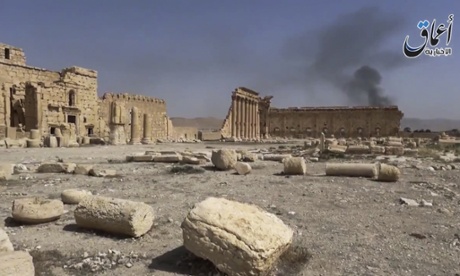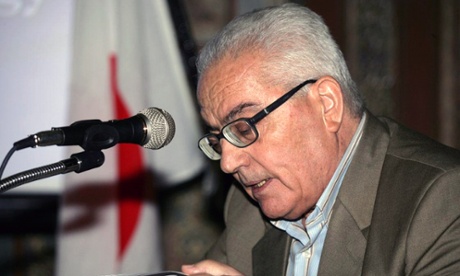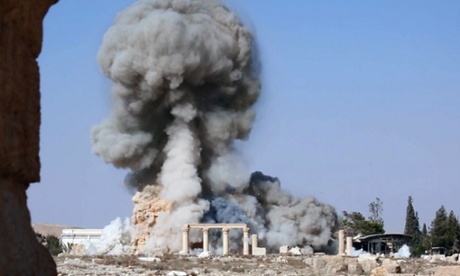Something incalculably precious has been wiped off the face of the Earth. Satellite photos have confirmed that the temple of Bel, a monument that for almost 2,000 years had stood resplendent amid the ruins of Palmyra, is no more. Scholars had been dreading the worst since the fighters of Islamic State annexed the ancient city back in May.
Few had put much faith in the initial assurances of the conquerors that they would spare the archaeological site: too much ruin had already been visited on the antiquities of the territory under their control for that. And sure enough, at the end of June, the militants demolished the iconic statue of a lion sacred to Allat – a goddess who had suffered the signal misfortune of being condemned by name in the Qur’an. Then last month they destroyed a temple dedicated to Baal Shamin, a deity often paired with Allat. That was tragedy enough.
The worst, though, was yet to come. The temple of Bel was (and how it stabs the heart to be obliged to use the past tense here) a monument fit to be ranked alongside the Parthenon or the Pantheon as one of the supreme architectural treasures to have survived from classical antiquity. Built soon after the absorption of Palmyra into Rome’s sphere of influence, it was dedicated in 32AD, at a time when Tiberius ruled the empire, and Jesus still walked the Earth.
The god to whom it was dedicated, though, was older by far than the Pax Romana. “Bel” in Akkadian meant “Lord”, and as such it was a title the Babylonians in their own imperial heyday had bestowed upon Marduk, the deity who reigned as their lord of lords. It was a tribute to the prestige of the great city that the Palmyrenes should gradually have assimilated Bel to the similarly named guardian of their oasis, a god named Bol. When the Romans arrived on the scene, they in turn had no problem in identifying this potent deity with the king of their own pantheon. Bel was, in short, a thoroughly cross-cultural god.
He was also a hospitable one. Even before the building of his great temple, a sanctuary sacred to him had stood on the site and provided a focus for Palmyrenes of every background and heritage. Phoenician gods, Aramaean gods, Arab gods: all found a home in the holy precinct of Bel. An inscription dated to 25AD, seven years before the temple’s consecration, hailed it in telling terms as the house not just of Bel himself but of all the gods.
The very process of constructing the great complex, by giving to the various tribes who inhabited the oasis a common purpose, seems to have played a key role in fostering a shared sense of identity among them. As the focal structure of the city, and a cult centre open to all, Bel’s temple served as a fitting symbol of what the Palmyrenes were gradually becoming: a single people.
No wonder, then, that Isis should have detested it. What could have been more offensive to it than such a monument to religious syncretism? Even the very fabric of the temple proclaimed the position of Palmyra as a crossroads and a melting pot.
From the outside, it appeared a building in the mainstream of classical tradition; but inside, with its separate shrines, its side entrances and its reliefs illustrating myths drawn from Babylon, it preserved the inheritance of the ancient near east. Maybe it was the carvings of the planets and the zodiac that signed its death-warrant; or maybe the fact that it had served in the late antique period as a church; or maybe even its most recent incarnation as a mosque. Whatever it was that led Isis fighters to load it with explosives, though, of one thing we can be certain: they perfectly understood the symbolism of their iconoclasm.
Which is why, even amid all the agonies of the Syrian people, the murders inflicted on them, and the bombings and the multiple horrors of a seemingly endless civil war, it is fitting to mourn the temple of Bel. That it has been pulverised after standing intact for 1,983 years serves as an apt and terrible symbol of the destruction that is continuing to tear all of Syria apart.
When Khaled al-Asaad, a scholar who for 40 years had supervised and cared for Palmyra, refused to flee the descent of Isis upon the ruins, he was making a statement that deserves long to be commemorated: that the fragile and romantic remains of the ancient city embody an ideal worth dying for.
Two weeks ago, in a grim foreshadowing of the dismemberment soon to be inflicted on the temple of Bel, he was decapitated, and his severed head placed beneath his mutilated trunk. Asaad perished a martyr to a city in which peoples who had cherished different gods and upheld different traditions had nevertheless managed to come together and fashion something wondrous. In meeting his fate, he had been looking to the future as well as to the past.
As the dust of what was once Palmyra’s most imposing monument is scattered on the wind, what else can we do but cling to the faint hope that he and the temple of Bel might not have perished entirely in vain?











